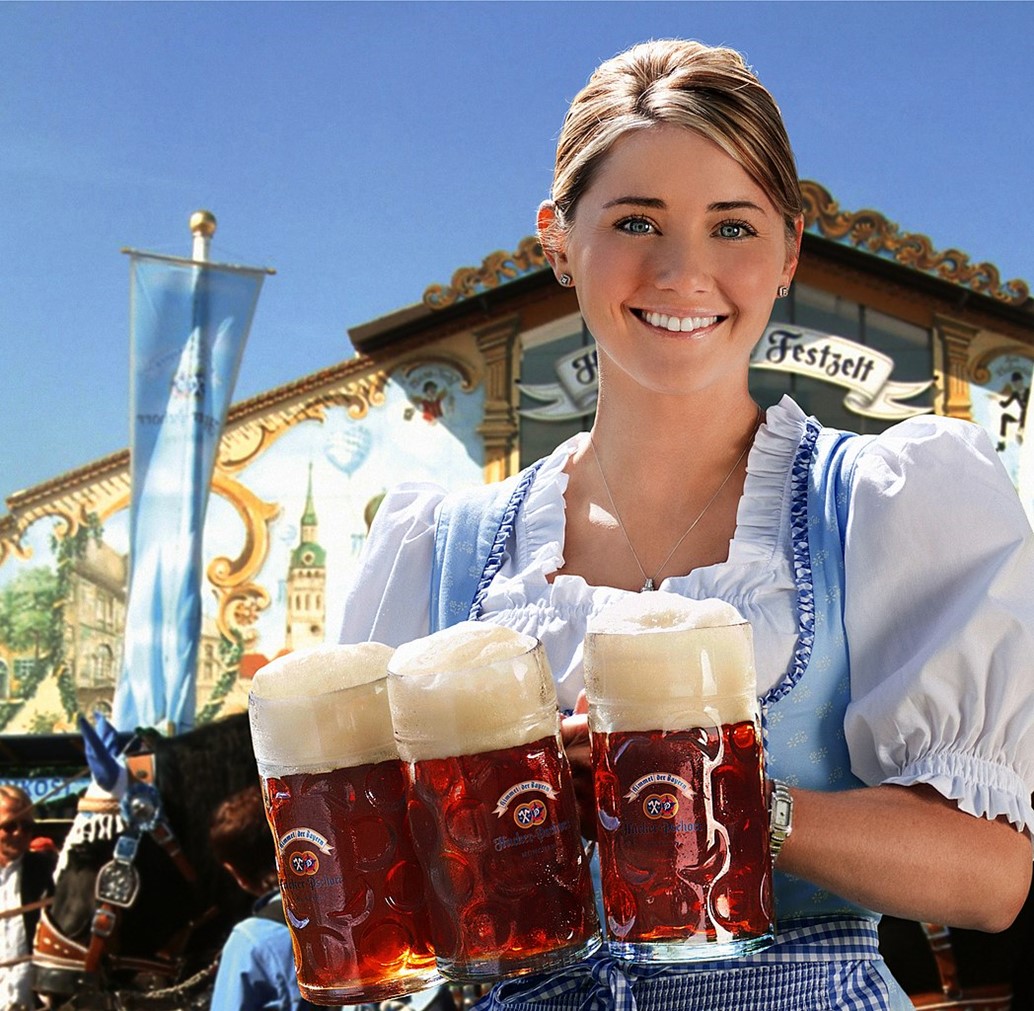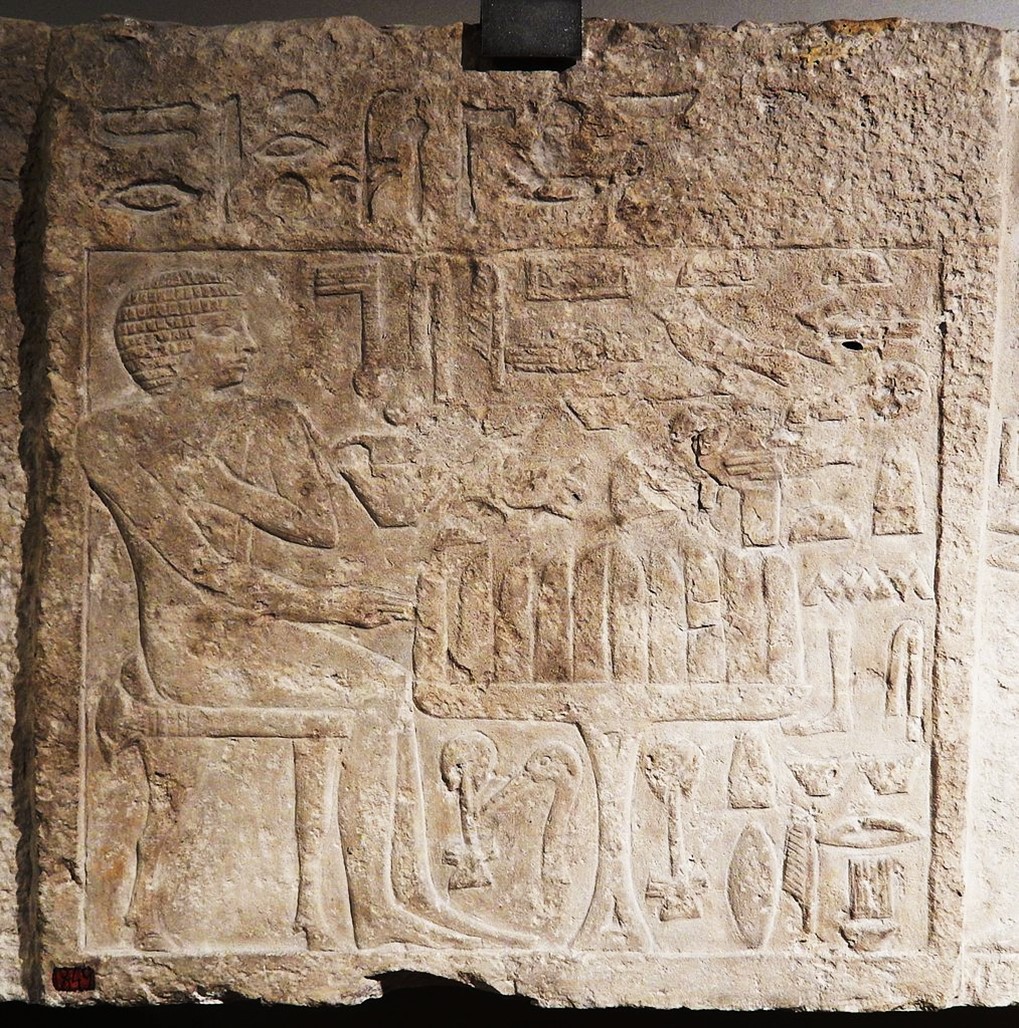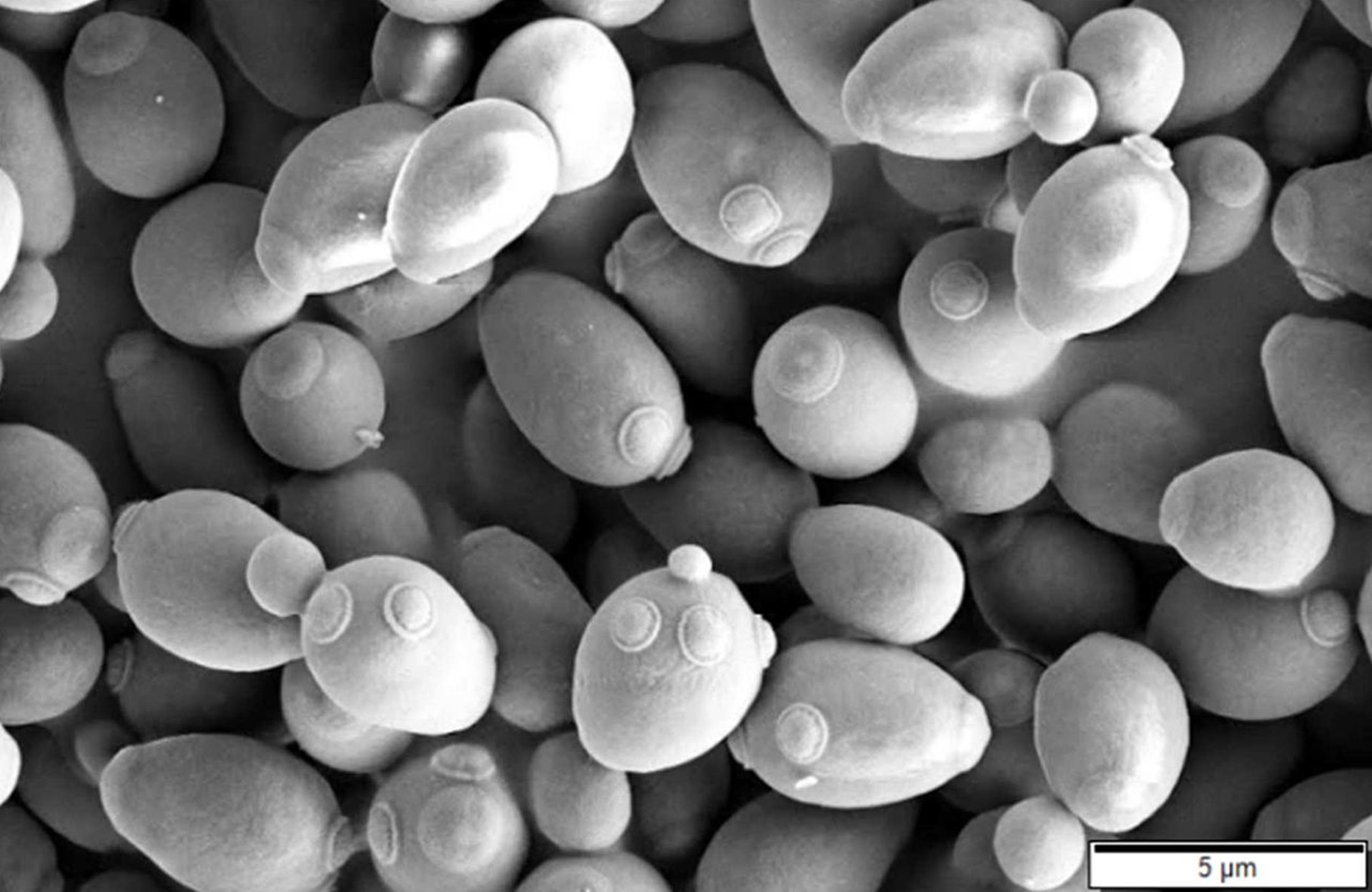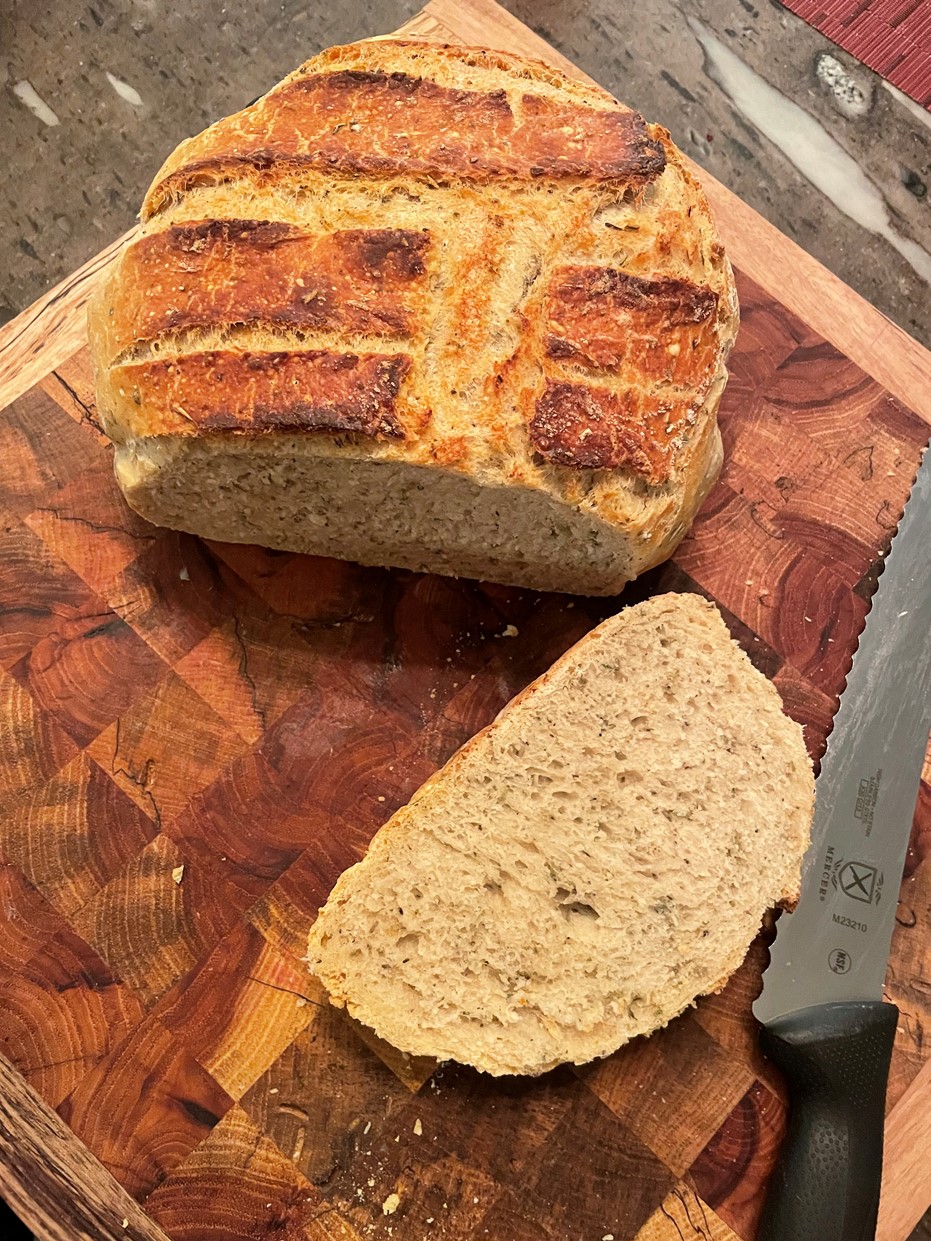
Credit: Lauro Sirgado (derivative work) and Markburger83, via Wikimedia Commons
Here’s a trivia question for you: what did humans domesticate first?
Before any bird, before anything with hooves, before crops, even long before the dog.
The answer is a fungus. That’s right, anthropologists now believe that early humans fermented fruit as much as 100,000 years ago—and through that process domesticated yeast.
Of course, we didn’t know we were doing it.
Even when ancient Sumerians and Egyptians started making beer and bread, they had no idea that yeast did the fermentation.
They just put some of the old fermented stuff in the new stuff, and it kept on fermenting.
It wasn’t until the 1600’s that scientists recognized yeast was responsible. And 200 years later that we understood yeast is a single-celled fungus.
Scientists believe yeast evolved naturally to consume sugar and excrete alcohol as a self-defense mechanism. Yeast is able to withstand concentrations of 12 percent alcohol or more, where other microbes die at just 5 percent concentration.
Brewers and vintners carefully monitor their yeast’s sugar consumption and alcohol production when making different beers and wines.
Bakers value yeast’s CO2 production, which makes dough rise and gives bread its light texture.
Today, yeast is carefully cultivated for the flavor it imparts to many of our foods and remains a vital and healthy part of our food system.
Background
Synopsis: Yeast is a single-celled wonder that has benefitted humans for thousands of years. Some archaeologists think this tiny fungus changed the course of human civilization, as humans shifted from hunter-gatherer to agricultural lifestyles. Certain yeasts protect their turf by producing alcohol that is toxic to other microbes, preserving human foodstuffs through fermentation. Carbon dioxide produced during fermentation gives us bubbles in beer and fluffy loaves of bread that may have encouraged social interaction as civilizations developed.
- Yeast is a tiny microbe that is intertwined with human history and may be the oldest domesticated organism on Earth.
- In an earlier episode (ED-331 Civilized Ants), we talked about how ants coevolved alongside their fungal crops to the point they can’t survive without each other. It turns out that, although humans and yeast don’t depend upon each other for survival, the fungus we call yeast probably changed the course of human civilization.
- Hominins are believed to have fermented fruits as long as 100,000 years ago.
- Genomic data suggests yeast traveled along the early Silk Road from China as long as 16,000 to 14,000 years ago.
- Sumerian and Babylonian records show that beer and wine were produced in the area that is now Iraq around 6000 BC. Ancient brewers used their “magical brewing sticks” to produce beverages like beer and wine from ordinary barley “tea” and grape juice. What they didn’t realize was that the “magic” was in the form of yeast, which accumulated while the sticks hung on their walls between batches.
- Bread, the “staff of life,” was produced by Egyptians as long as 3,000 years ago. It was probably invented when a fermented beverage was spilled on ingredients of cracker-like unleavened flatbread. When ignored long enough the accidental mixture began to rise, and when baked it would have produced the first loaf of “leavened” bread, which became a popular nutritious and portable food.

Egyptians thought the action of yeast was a miracle. This slab stele was excavated in 1903 from the 4th Dynasty (2543–2435 BC) tomb of Itjer at Giza, Egypt. Itjer is seated at a table with vertical slices of bread. Other offerings described in the text near the table are incense, fruit and wine.
Credit: Ian Alexander, via Wikimedia Commons - The use of yeast spread to many cultures with the added benefit that fermentation also preserves foods.
- In 1680, scientists realized that it was microscopic flecks in the food that caused fermentation, and, in 1857, Pasteur realized yeast was made up of living organisms that caused the aromas and flavors of fermentation to occur.
- In May 1996, the first complete genome of yeast was mapped with 12,000 million base pairs in 16 chromosomes. Of its 6,000 genes, one-third are related to human genes. It has been used as a model organism in genetics and molecular biology research due to its rapid growth, ease of handling, and similarity to human cells in terms of genetic and metabolic pathways.
- Yeasts are single-celled organisms that belong to the fungal kingdom. What is a fungus?
- Fungi diverged from plants and animals about a billion years ago.
- Fungi are not plants. They do not photosynthesize, so they don’t need sunlight.
- More than 120,000 species of fungi typically get their energy by secreting digestive enzymes to break complex molecules into smaller components plus energy that they live on.
- Microscopic yeasts can be found all over Earth because they can float through air, sticking to a variety of surfaces, including plants and soil.
- Yeasts diverged from other fungi about 100 million years ago, around the time in the Cretaceous Period when flowering plants and fruits evolved.
- Yeasts are distinct from other fungi because they are single celled, can reproduce through asexual budding, and can ferment sugars.

Single-celled Saccharomyces cerevisiae budding as seen using scanning electron microscopy.
Credit: Mogana Das Murtey and Patchamuthu Ramasamy, via Wikimedia Commons - There are 1,500 species of yeast that each contain a nucleus, DNA, and additional organelles typical of more complex organisms.
- About 250 yeast species evolved to convert sugar into carbon dioxide and alcohol, which is toxic to most other microfungi and bacteria.
- Two dozen of these alcohol-producing yeast species actually taste good and are used by humans to improve flavor and preserve food through fermentation.
- The most commonly used yeast species for beer, wine and bread is Saccharomyces cerevisiae, which means “sugar-eating fungus of beer” (cerveza in Spanish). Today, there are many thousands of different strains of this yeast around the world that evolved slightly different characteristics.
- Any process that involves yeast begins the same way. The yeast produces enzymes that break down glucose (C6H12O6) to produce energy (ATP), carbon dioxide (CO2), and a carbohydrate called pyruvate (C3H4O3) in a process known as glycolysis.
- In the presence of oxygen, the next step is an efficient citric acid cycle called the Krebs cycle that consumes the pyruvate to produce more CO2 and the maximum amount of energy possible. No alcohol is produced through this process.
- But in liquids, the slowly diffusing oxygen is soon depleted, so some yeast species began to consume glucose anaerobically, producing carbon dioxide and a smaller amount of energy, while leaving alcohol and distinctive flavor and aroma metabolites behind as byproducts. This process is called fermentation.
- Fermentation protects Saccharomyces from competing microbes. Most yeast can endure alcohol concentrations of 12–15%, while some can tolerate up to 20%, but other types of microbes are poisoned at 5% alcohol by volume (ABV).
- Yeast is particular about temperature and may perish if exposed to temperatures higher than 120°F (48.8°C).
- Humans have used this chemical reaction to enhance flavors and preserve food and drink for millennia.
- For bread, a baker wants to capture the carbon dioxide bubbles to enable the bread to ferment (rise) before baking.
- Bakers limit the amounts of yeast and sugar in the dough to control alcohol production during the rise, and any remaining alcohol evaporates during baking.

Fermentation of yeast gives off carbon dioxide that forms bubbles within the gluten strands in bread, causing it to rise.
Credit: Bread by Clay Person, photo by Juli Hennings, Bureau of Economic Geology - Sourdough starter is made of water, flour, wild yeast and lactic acid bacteria that reflect the unique environments it has passed through.
- Yeast cultures can be rejuvenated after they go dormant—microbes extracted from 4,000-year-old Egyptian ceramics were revived to produce a sweet loaf of sourdough bread.
- Bakers limit the amounts of yeast and sugar in the dough to control alcohol production during the rise, and any remaining alcohol evaporates during baking.
- For wine or other alcoholic beverages, the maker wants to capture the alcohol and aromatic compounds from the fermentation of grape juice or grain, agave, or potato infusions.
- Experts estimate that yeast varieties used by the vintner are responsible for 80% of the aromatic components we can sense from wine.
- For beer, the brewer wants to capture both the alcohol and the CO2. Beer is made of malted (sprouted) barley, water, hops (originally a preservative) and yeast. Different strains of a few species of yeast produce different beers.
- Ales use Saccharomyces cerevisiae to produce more complex, aromatic beers with higher alcohol contents.
- Lagers use Saccharomyces pastorianus, a yeast that produces lighter, thirst-quenching beers like pilsners.
- Low alcohol beers can be made with special yeasts like Saccharomyces cerevisiae var. chevalieri that don’t consume as much sugar instead of removing alcohol using more expensive technologies.
- Varied yeast strains produce metabolites that create different characteristics, flavors, and textures in many fermented products including beer, wine, bread, cheese, yogurt, sauerkraut, kimchi, soy sauce, and even ethanol-based fuels.
- Over time humans learned to cultivate and use different strains of yeast to control the fermentation process and create different types of bread, wine and beer with varying aromas and flavors.
- For bread, a baker wants to capture the carbon dioxide bubbles to enable the bread to ferment (rise) before baking.
- Yeast can provide a range of health benefits, whether consumed in the form of fermented foods and beverages, nutritional supplements, or as part of a balanced diet.
- Yeast is a rich source of vitamins and minerals, including B vitamins, iron, zinc and magnesium. These nutrients are essential for the proper functioning of the body, including energy metabolism, immune function, and the formation of red blood cells.
- Yeast is also important for digestive health, containing enzymes that aid in the breakdown of food and the absorption of nutrients.
- Some strains of yeast have been shown to have probiotic properties. Probiotics include both yeasts and beneficial bacteria that can help to maintain a healthy balance of microorganisms in the gut.
- Yeast has also been found to have immune-boosting properties. Certain compounds found in yeast, such as beta-glucans, have been shown to stimulate the immune system and help to protect against infections and other diseases.

